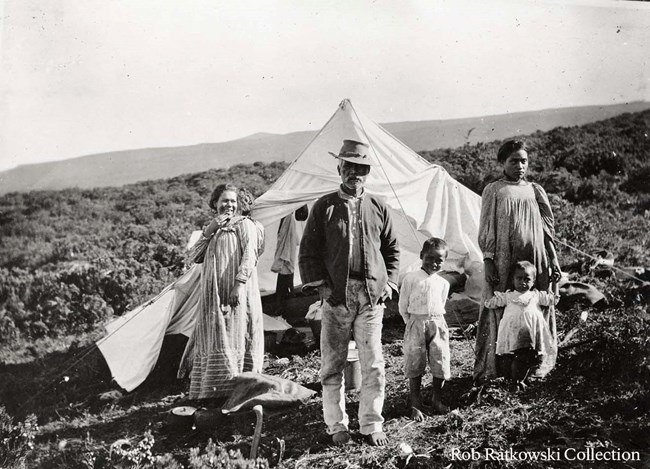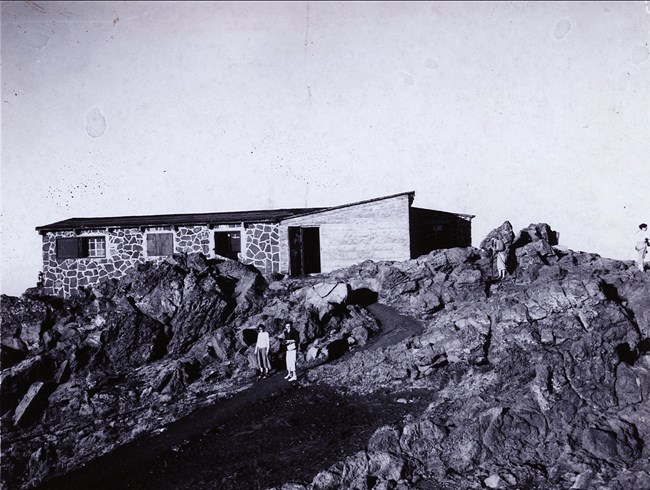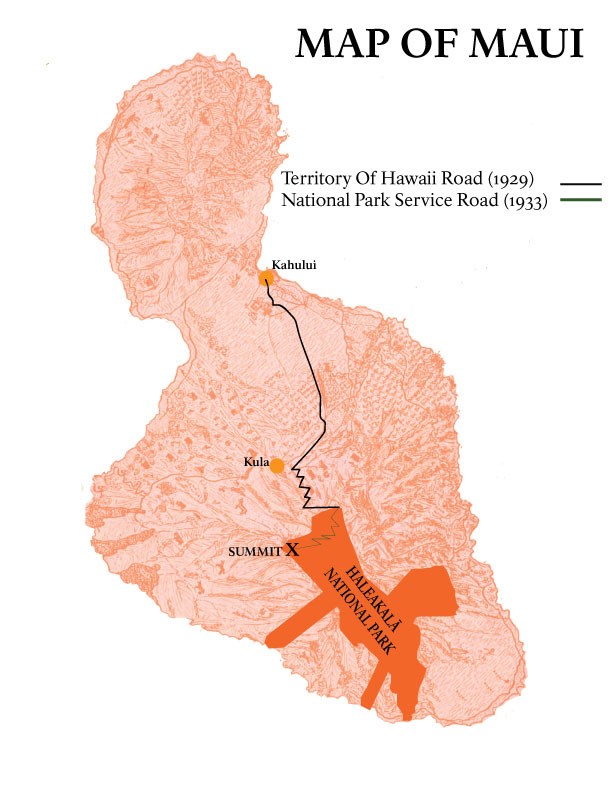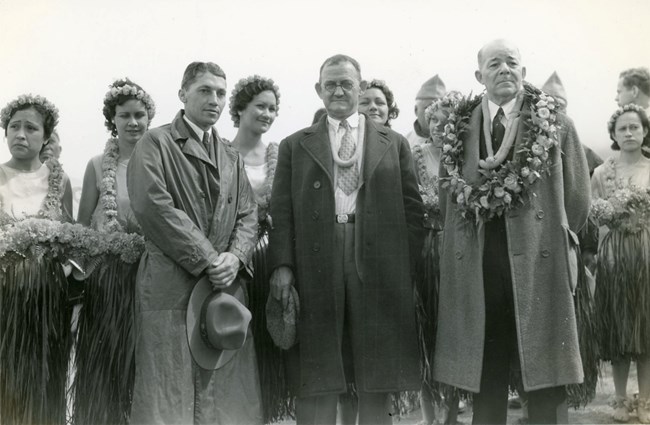INTRODUCTIONThe Haleakalā Highway is a significant part of Haleakalā National Park. The park’s section of the road starts at the entrance to Haleakalā National Park and zigzags 10.677 miles through shrublands all the way to the summit. This makes the visitors’ final destination the view of the volcanic depression. Highway construction started in 1933 and took two years to complete, with a budget of $369,758. When the road was finally finished in 1935, it was an occasion for celebration. The Maui Chamber of Commerce, who had actively contributed to the road project, hired a full-time publicist to help promote the road and adopted the slogan “Bring the World to Maui.” 
Rob Ratkowski Collection 1.Haleakala Ranch spells its name without the kahakō.
2.Hawaii National Park historically was spelled without the okina (‘). 
NPS Photo Tourism to HaleakalāBefore the 1900s, Haleakalā was not accessible by road. People had to either travel by foot or horseback and it was a difficult trek. However, the beauty of Haleakalā was well worth the trip. Tourism was established on Maui by the 1890s and Haleakalā was Maui’s prime attraction. The Maui community worked hard to accommodate visitors to the summit. Haleakala Ranch, tour companies, and others provided guided horseback trips. A group of wealthy Maui businessmen built a rest house at Kalahaku (photographed) in 1894. By 1911 tourism was slowly increasing, but Kīlauea on Hawai‘i Island was attracting more visitors because it was accessible by road. This led to the idea to have a road built to the summit of Haleakalā, an idea that took two decades to come to fruition. 
NPS photo PROMOTING PLANS FOR A ROADIn 1916, congress established Hawaii National Park, encompassing Haleakalā on Maui Island along with the volcanoes Mauna Loa and Kīlauea on Hawai‘i Island. Those with interests in the park saw this as a great opportunity to develop infrastructure, increase visitation, and protect the resources of Haleakalā. However, with most of the funding going to development of infrastructure at the active volcano of Kīlauea, development at Haleakalā was slow-going. In fact, Haleakala Ranch still owned much of the park lands up until 1928. Finally in the 1930s, funding for the road became available from federal aid programs founded in the years after the Great Depression. The Territory of Hawai‘i and the National Park Service (NPS) planned to partner together to construct a road from Kahului to the summit. Haleakalā was finally getting its road.However, not everyone was pleased with the road. The Maui News reported that from the outset of the project, Hawaiians protested the building of the road on sacred Haleakalā. They believed that the gods would bring disaster to the project. Any misfortune or set back was contributed to the Demigod Māui, his mother Hina, and Kalauhelemoa, a rooster from the legend Maui Snaring the Sun. Armine von Tempski, a novelist from one of Maui’s prominent ranching families, reportedly complained that the road robbed Haleakalā of its adventure. DESIGNING A ROADThe NPS wanted to ensure that the road was built to the highest engineering standards while protecting the landscape. The road project involved some of the most well-known names in the NPS, including early conceptualization of the road by Park Service Director Horace Albright and NPS landscape architects Thomas Vint and Merel S. Sager. It was once proposed that the road would go through the Haleakalā volcanic depression (known as the “crater”). Another plan had the road ending at the Kalahaku rest house. However, both ideas were eventually rejected. In the end, the road extended to Haleakalā Visitor Center (HVC) at the edge of the crater, the building you are standing in! The final design of the road created a journey for visitors, leading them through the alpine shrubland of Haleakalā without giving away the “Grand Finale” until the end, where visitors were required to leave their cars and walk to the edge of the volcano to view the vast volcanic wilderness.
NPS photo CONSTRUCTIONIn 1933, construction for the park section of the road began. This project took two years to complete with 255 men working on it. Construction access roads were prohibited in order to minimize negative impacts on the land, meaning that crews and machinery could only work within the road’s narrow, 14-foot right of way. Drainage features such as culverts and gutters, and the project’s one bridge, were built or faced with lava-rock masonry, which complemented the natural surroundings. Mortar samples from the historic culverts were taken during recent historic preservation projects.When the highway opened in 1935 it was notable as the first highway in Hawai‘i to have super-elevated curves, which, the Maui News reported, came “close to making the highway fool-proof against reckless driving.” 
NPS Photo OFFICIAL OPENING OF THE ROADOn February 23rd, 1935 a celebration was held for the road’s opening at Haleakalā National Park. The Maui Chamber of Commerce planned the opening celebration, which included hula, music, talks at the park, and a lū‘au at the Kahului fairgrounds. Over 1,639 people attended with 320 cars making the trek. Photographed from left to right are Edward Wingate (Park Superintendent), Worth Aiken (Maui kama‘āina and advocate for the road), and Arthur Green (Secretary of the Territory). The National Broadcast Company (NBC) radio broadcasted the ceremony from a temporary shed to around sixty- five stations in the United States. The broadcast was said to have reached 10 million people. IMPACT OF THE ROADBy the end of 1935, visitation to the park had increased by 455%. With easier access to the park, many in the Maui community played in the summit snow for the first time in the winter of 1936. The park was able to start developing facilities and assigned the first full-time park ranger to Haleakalā in 1935. Despite the early protests of the road project, it was a success and today the park receives over 1.2 million visitors a year. While the road was a great accomplishment that has allowed for accessibility and conservation of the land, the park must continue to work with the community to protect the sacred summit of Haleakalā. |
Last updated: October 2, 2018
